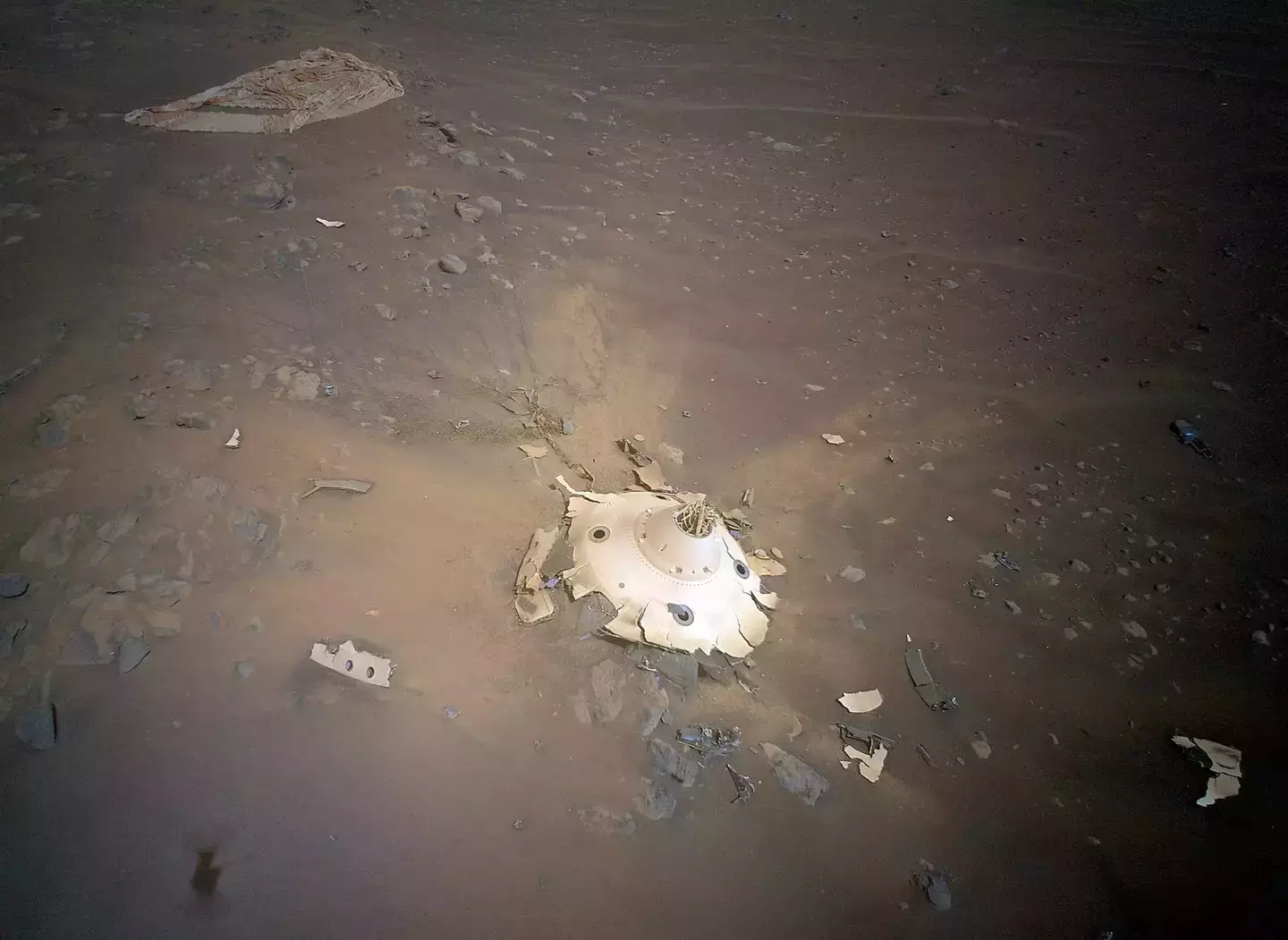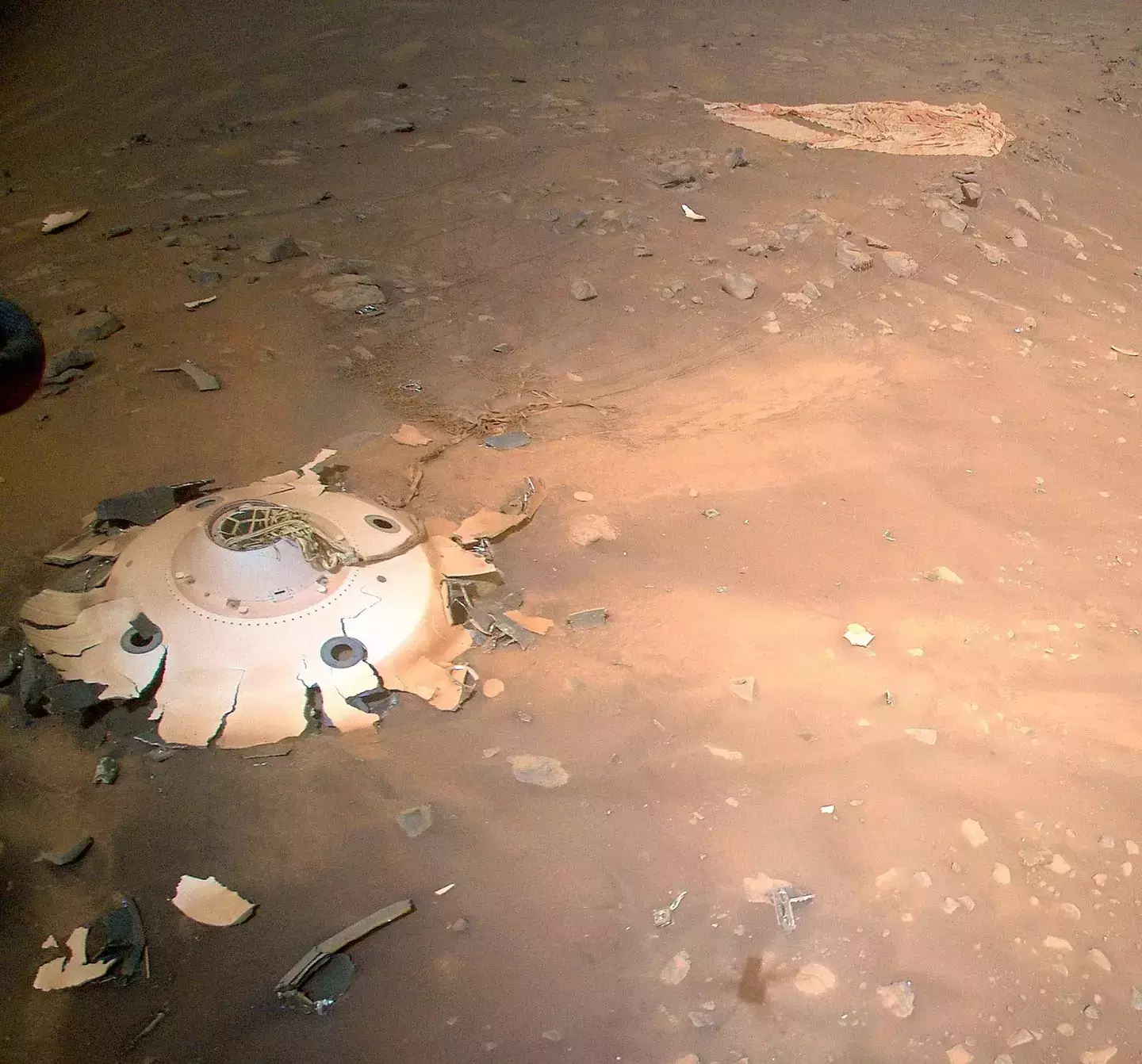NASA’s Ingenuity Helicopter Discovers Mars Debris, Revealing New Chapter in Space Exploration
NASA’s Ingenuity Helicopter, a key component of the Mars 2020 mission, recently stumbled upon a striking sight: fragments of a spacecraft lying amid the Martian sand, tinged by Mars’s reddish dust. The discovery of this debris — remnants of the landing gear used to deliver Ingenuity and the Perseverance Rover to Mars — may appear “otherworldly” at first glance, but it’s a reminder of humanity’s footprint beyond Earth.

The Mars 2020 mission, launched with the goal of exploring Mars’s terrain and seeking signs of ancient life, took with it the Ingenuity Helicopter, initially designed for just five flights. Surpassing expectations, Ingenuity has completed 72 flights and, in doing so, became the first powered, controlled aircraft to fly on another planet. This feat mirrors the significant progress humanity has made in a little over a century since the Wright brothers’ first flight in 1903, sparking speculation about how much further our technology could advance by the end of this century.
The debris Ingenuity encountered in 2022 serves as a unique symbol of this progress. Captured in a haunting image, the wreckage embodies both the sophistication and imperfection of our exploration efforts. Ian Clark, a NASA engineer involved in designing Perseverance’s parachute system, called the scene a “sci-fi” spectacle, adding, “They say a picture’s worth 1,000 words, but it’s also worth an infinite amount of engineering understanding.”

While the debris may appear reminiscent of a science fiction tale, it’s purely human-made. It highlights a growing issue in space exploration: littering. Mars now joins Earth’s orbit, which has accumulated thousands of inactive satellites and debris, as a landscape marked by human presence. According to estimates, our planet’s orbit hosts around 2,000 active satellites, alongside about 3,000 ‘dead’ satellites and countless fragments of space junk. This floating debris not only poses dangers to current spacecraft but also presents challenges to future missions.
The question remains whether humanity will eventually retrieve or clean up this scattered debris on Mars, or leave it to chronicle our early ventures into interplanetary travel. As with the growing problem of space junk orbiting Earth, these remnants offer both a point of pride and a reminder of the need for responsible exploration as we continue to push the boundaries of our reach into space.
